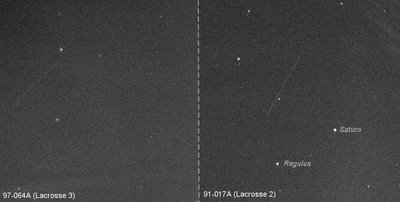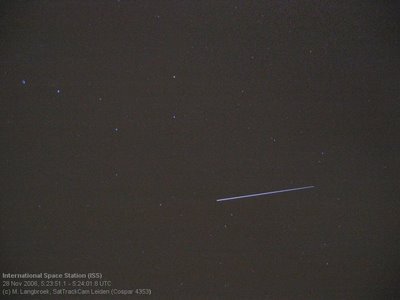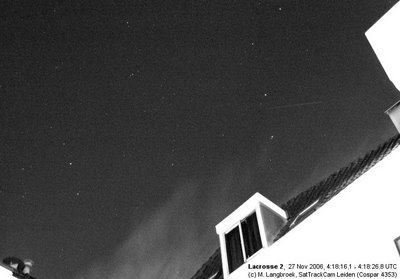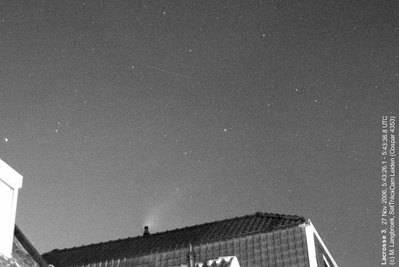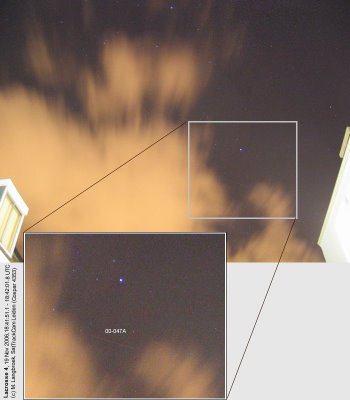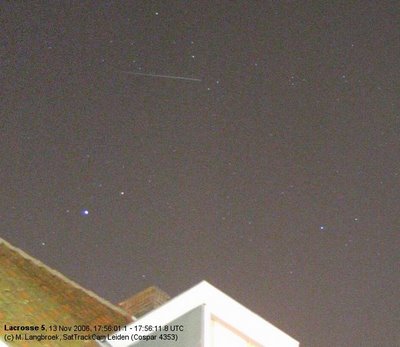And I almost got fooled by a celestial imposter!
At the end of the fine pre-dawn session I was waiting for a pass of the ISS. While preparing the camera I realised I had used elements from before the scheduled orbit boost for ISS, so I reckoned it might perhaps appear somewhat off-time (later, it turned out I made a mistake in this anyway, as the boost would only occur his evening and not last evening as I thought by mistake...).
At 5:42 UTC, 1 minute early, I saw a bright object appear in Gemini close to but slightly south of the point where ISS should emerge from earth shadow. It initially was about mag. +0.5 in brightness. "Ah, there it is!" I thought and triggered the camera...
(click image to enlarge)
As the camera ended its exposure, I realized something was wrong...
My brain registered disappointment about the brightness of this "ISS", then wondered about a 1 minute early appearance (a bit too much??), and as I watched the object I realized its course was bringing it much too much north to be ISS...so, this was an imposter!
So I quickly swapped back the camera. And yes, there it appeared,low west, almost at te moment I turned my sight to it: the real ISS, close to Castor and Pollux, at a splendid bright mag. -3...!
(click image to enlarge)
The "imposter" was later identified as te Upper atmospheric research satellite UARS (91-063B, #21701). The darn thing almost fooled me...! :-P
Like from my images of last Friday, I constructed a mozaic of two ISS trail images from this morning again:

(click image to enlarge)
It is well visible how bright ISS is just after coming out of earth shadow.
Apart from ISS and UARS, I also imaged Lacrosses 2 & 3 this morning, and recorded a second stray on one of the Lacrosse 2 images, which turned out to be 70-037B (#04394), an old Russian Soyuz rocket stage from the Meteor 1-4 launch, 1970.
